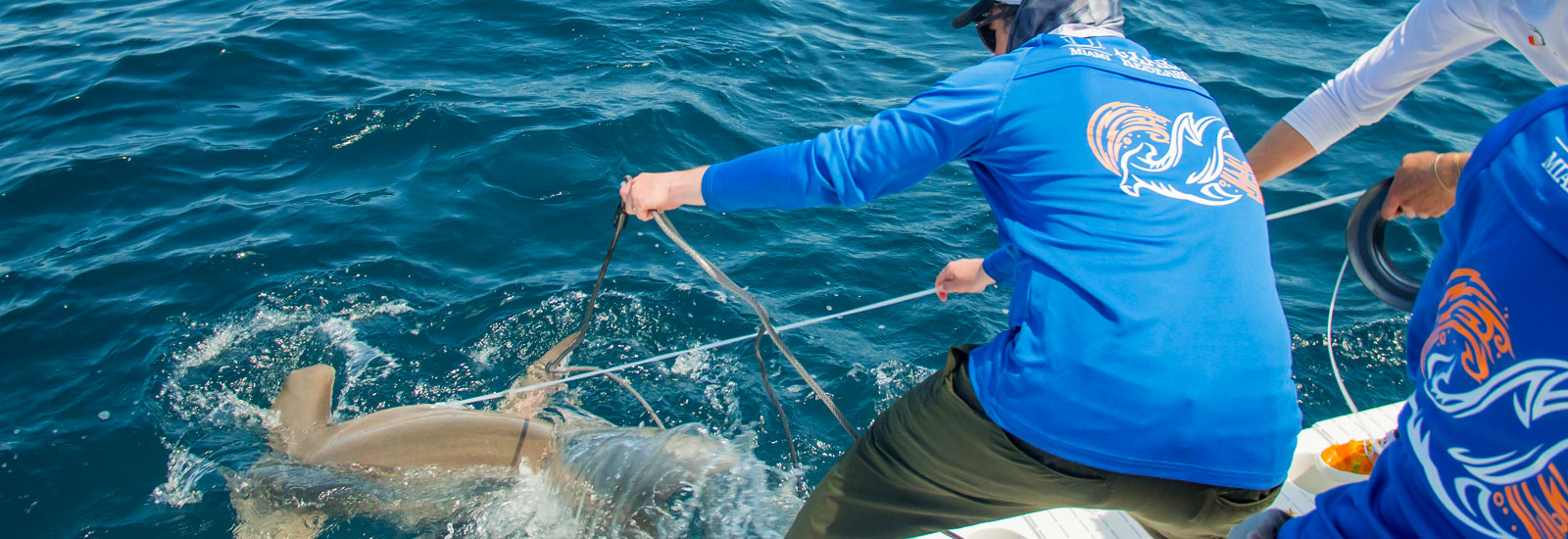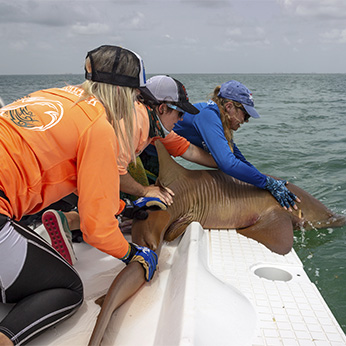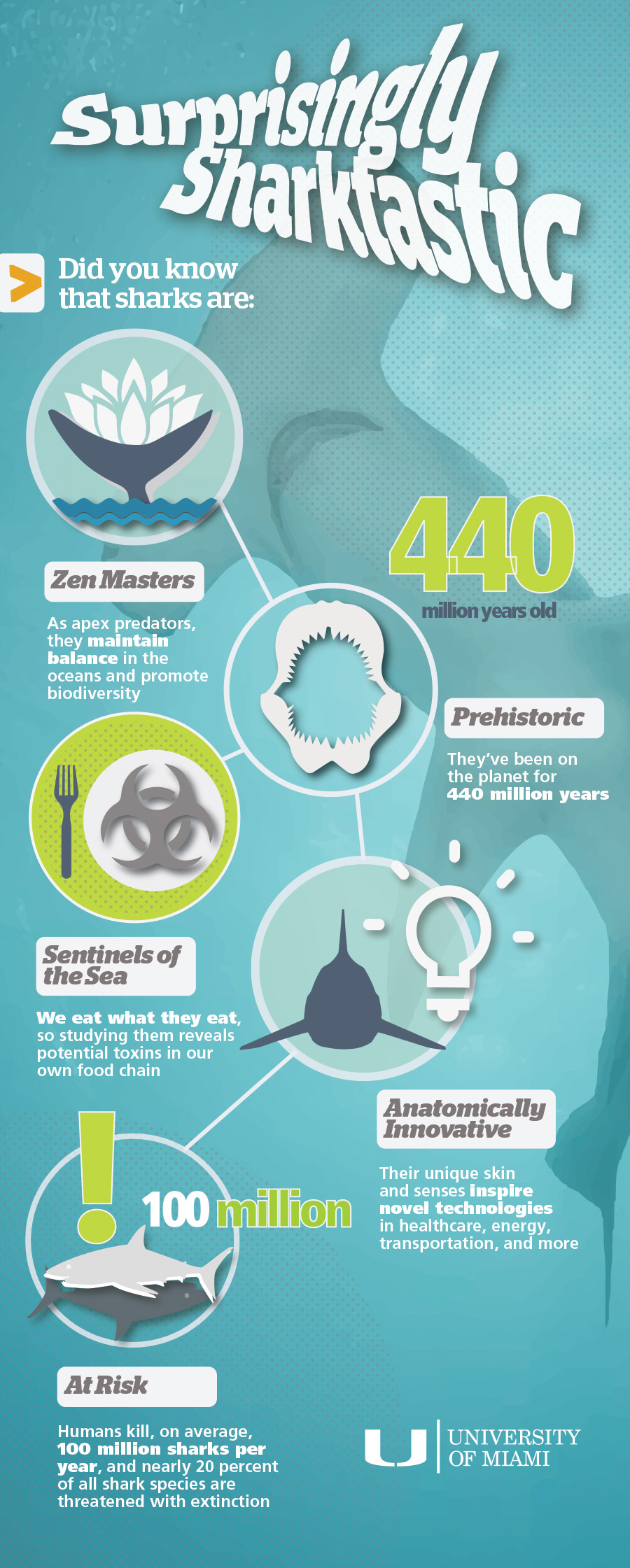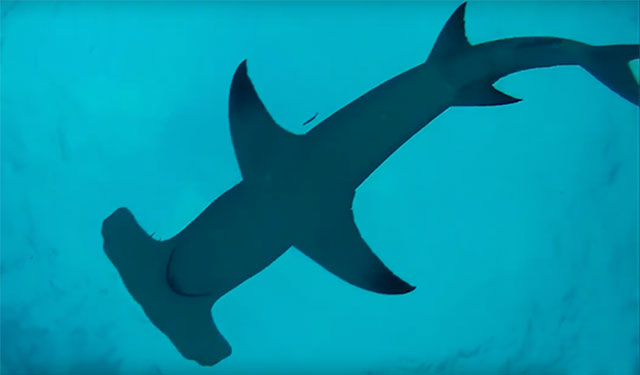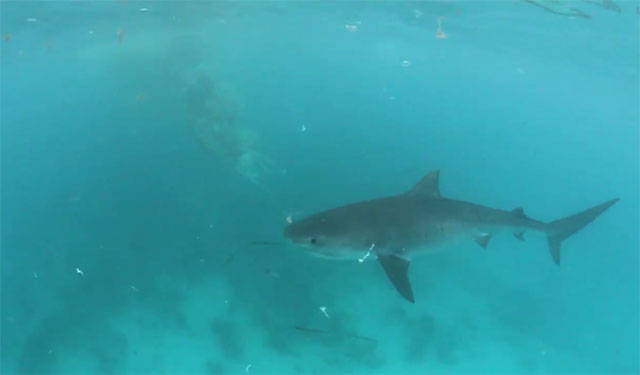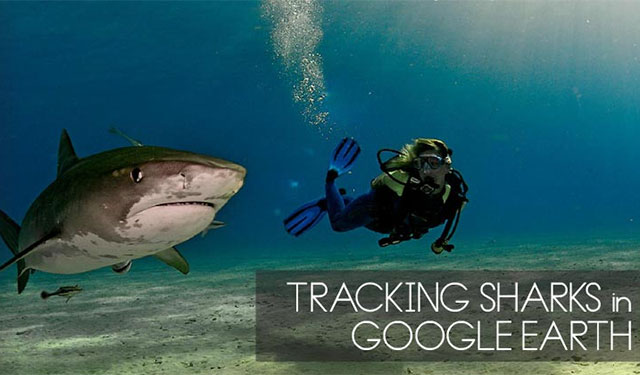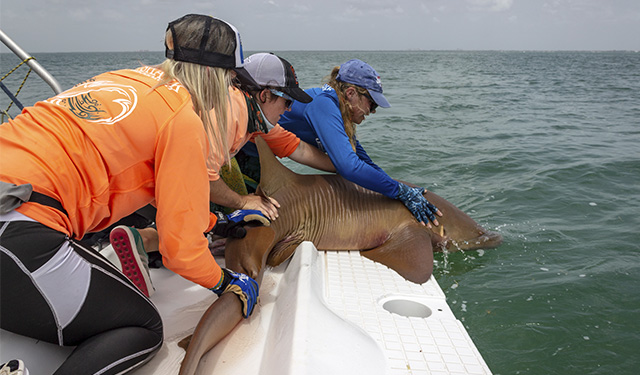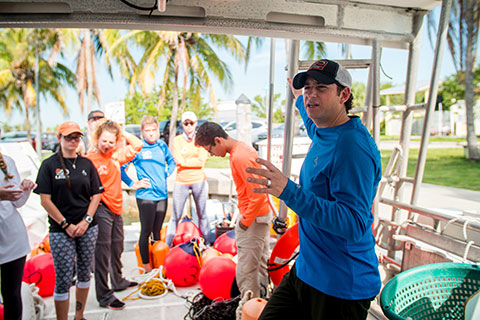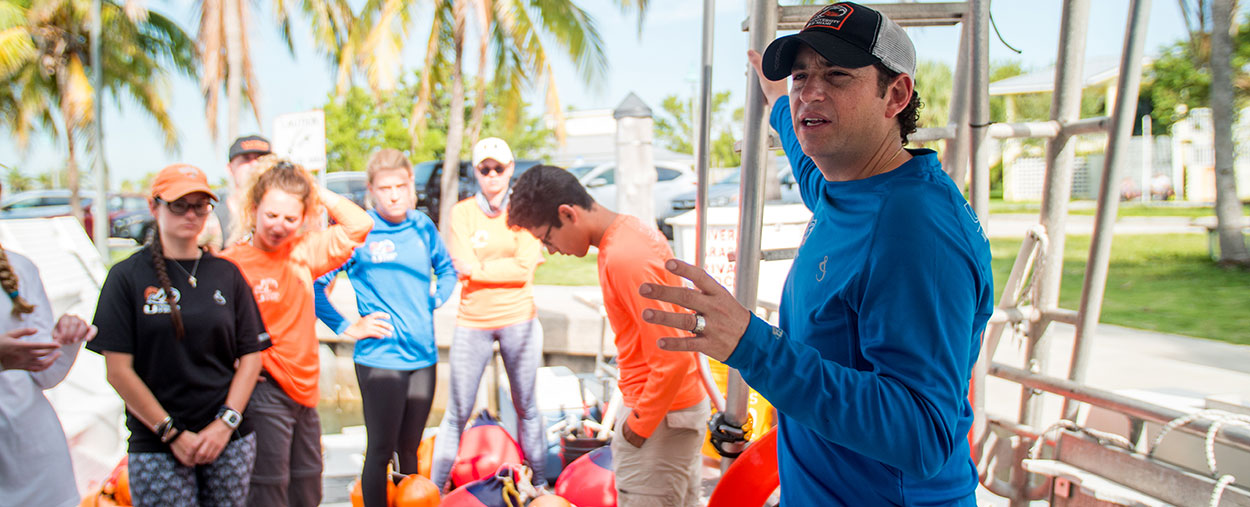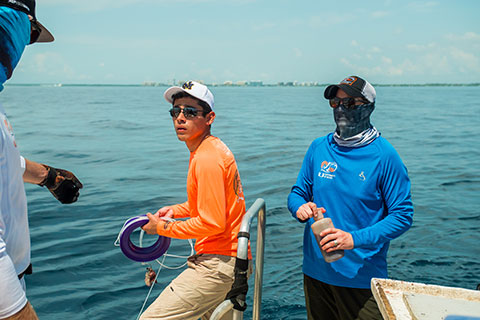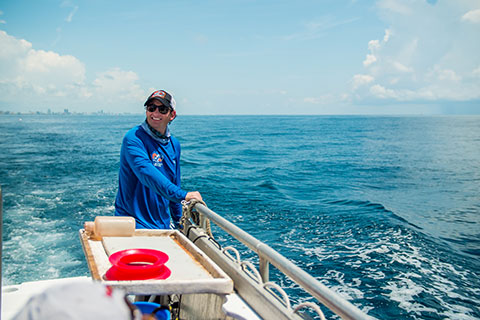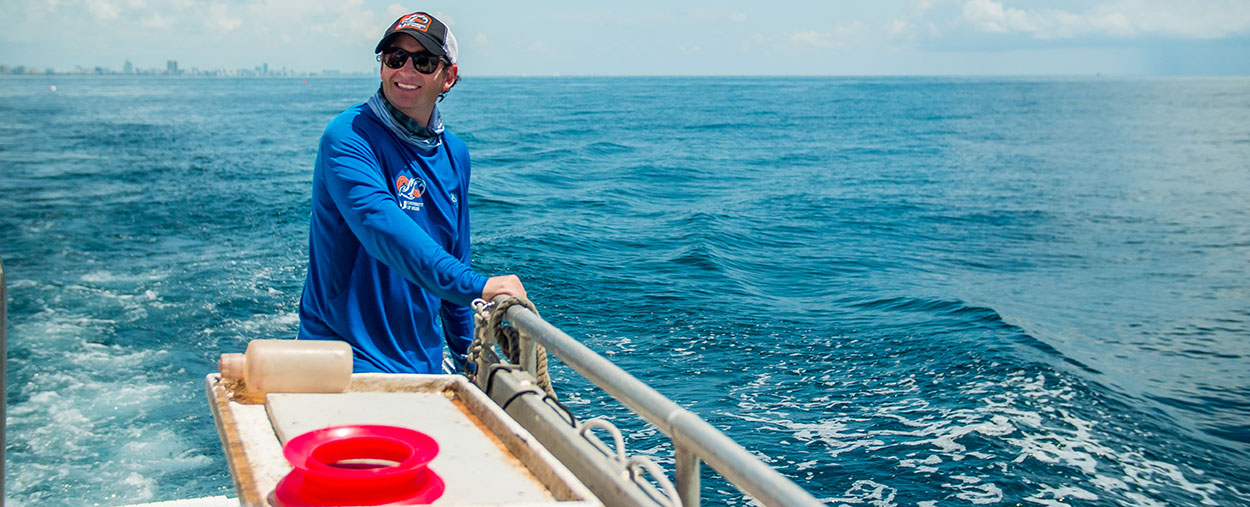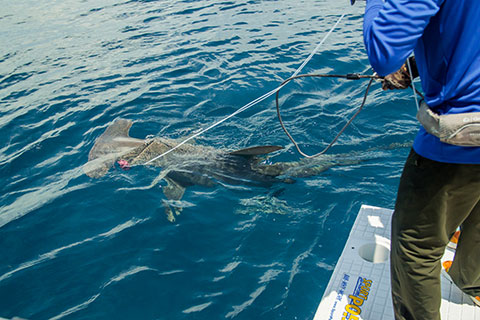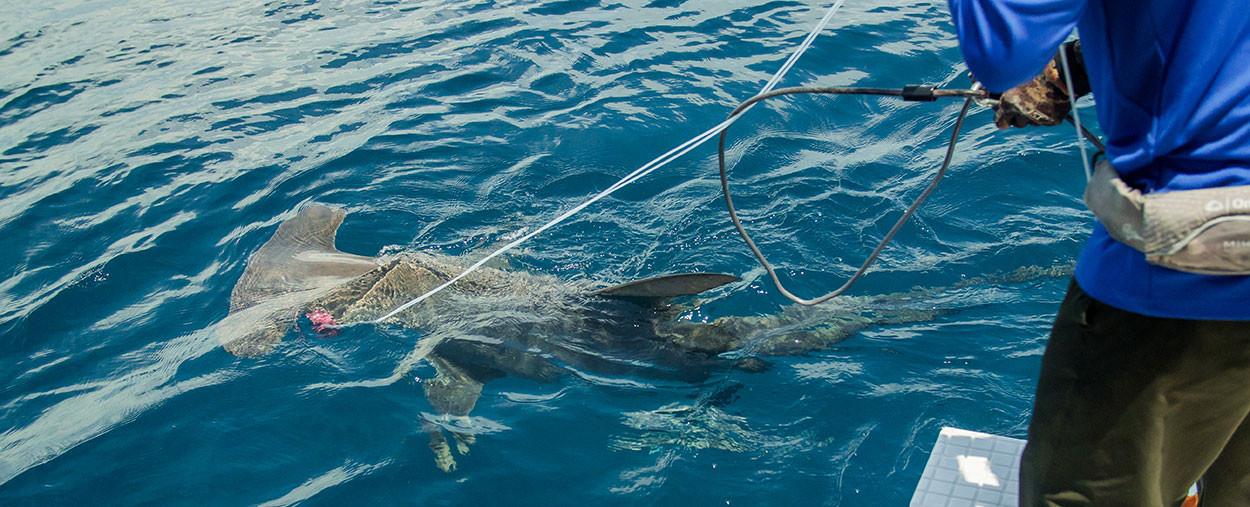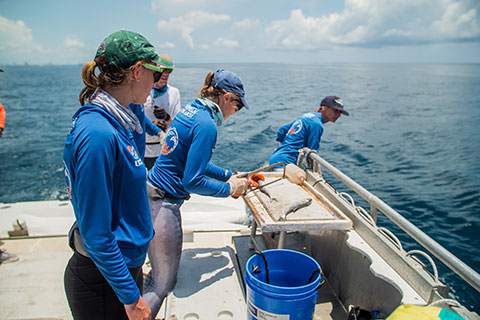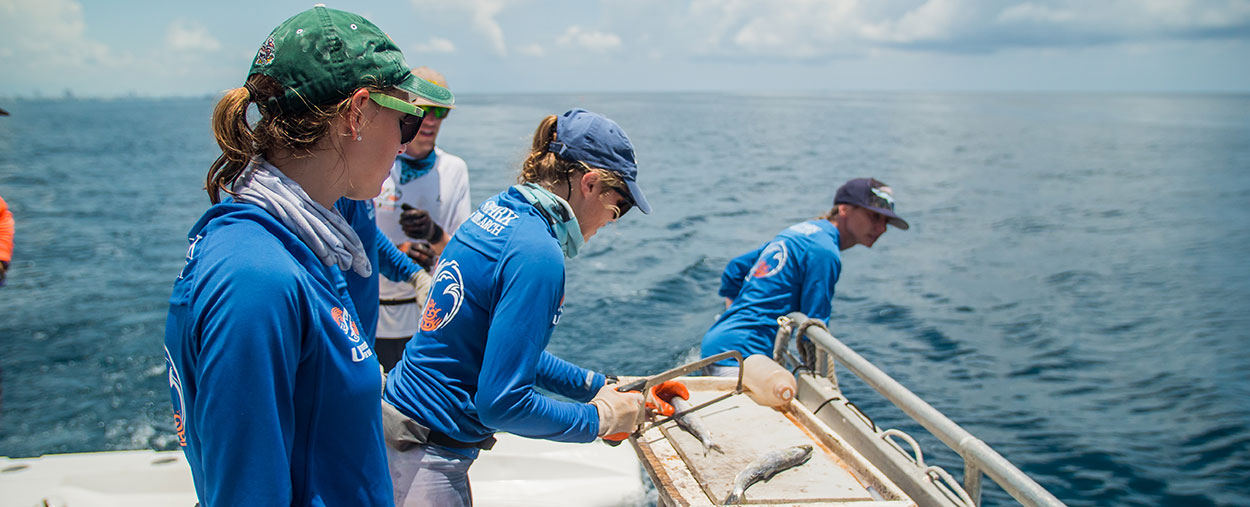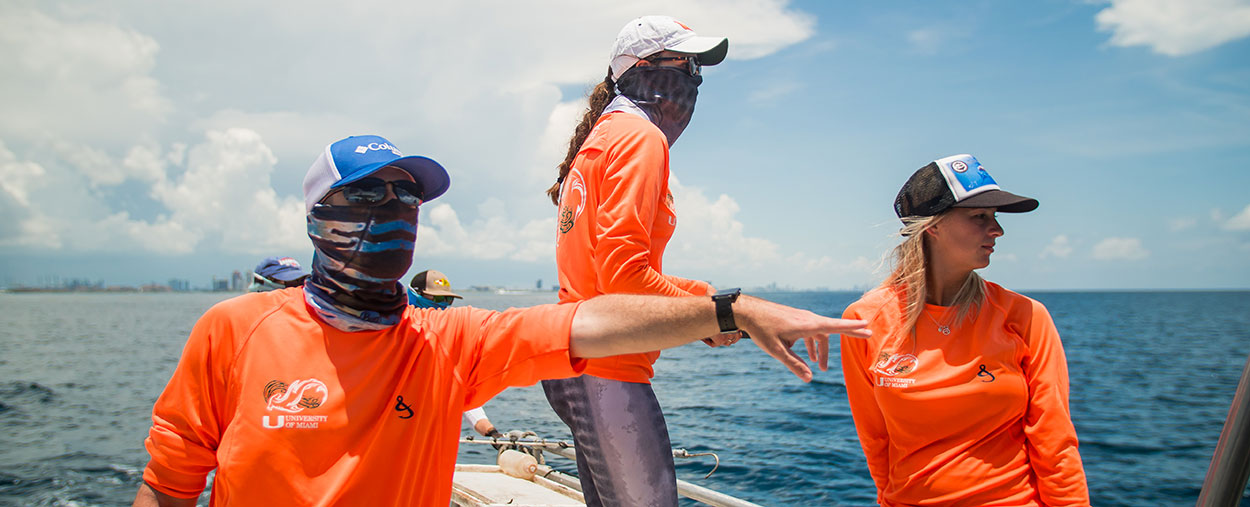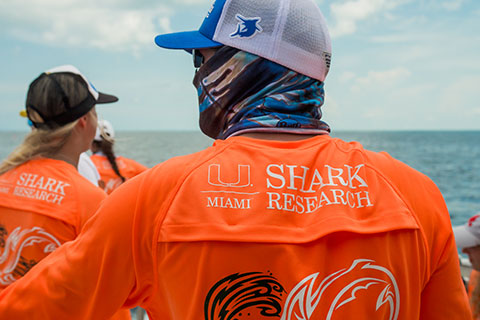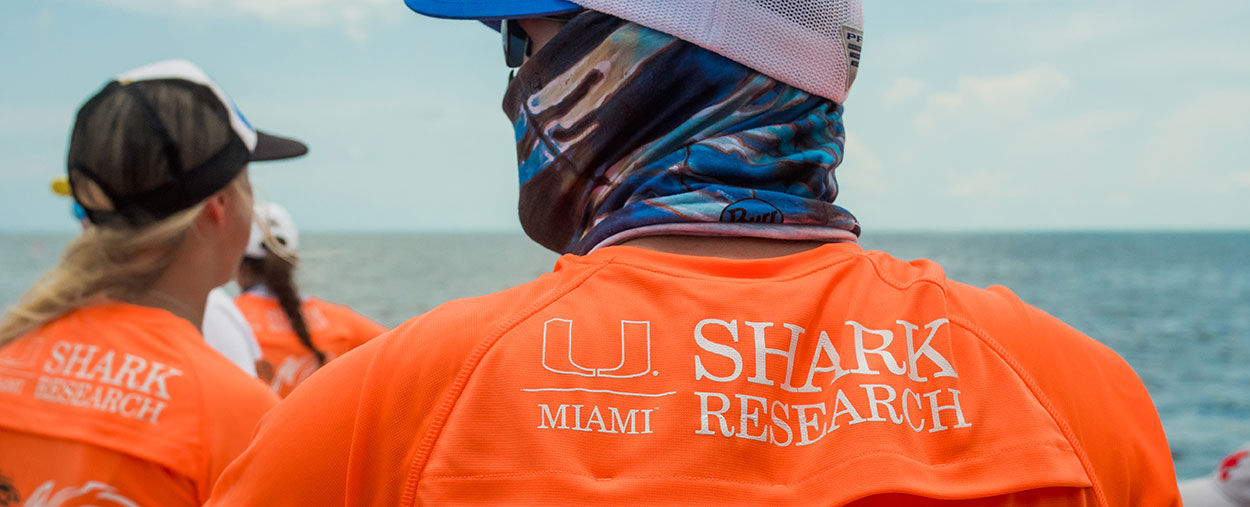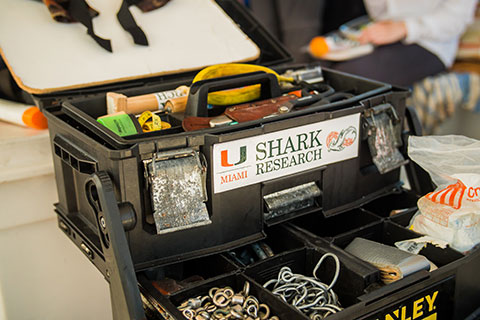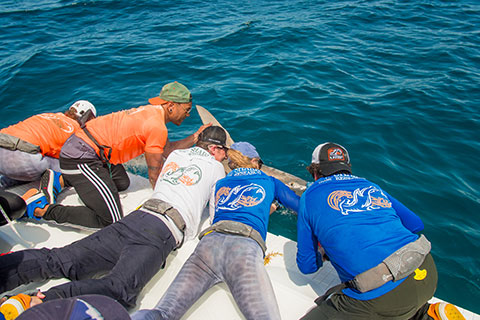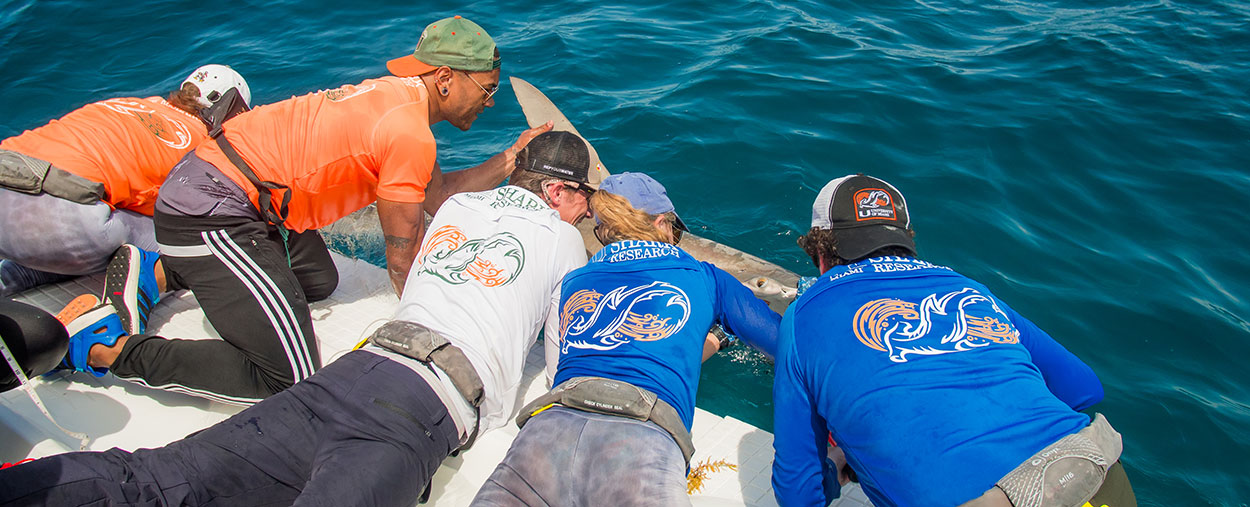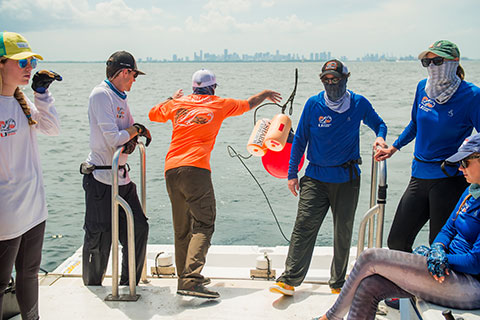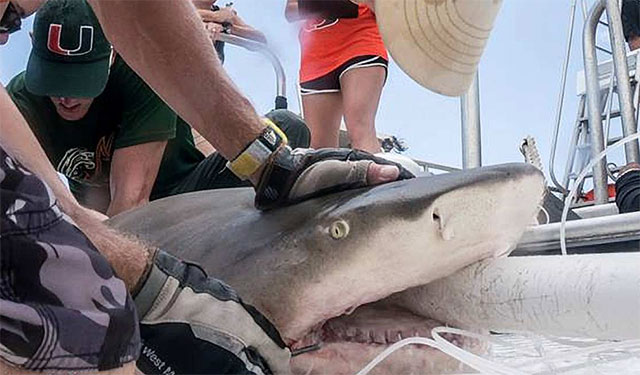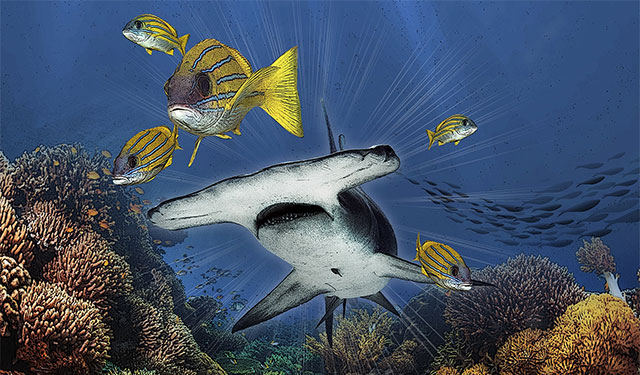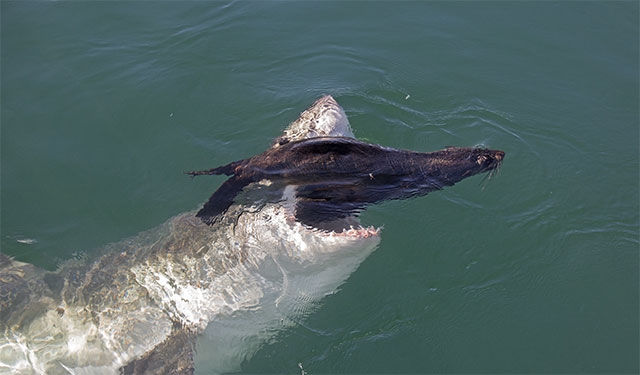by ROBERT C. JONES JR.
UM News
07-16-2018
The five massive tiger sharks had been ripping apart the drifting whale carcass for hours, cutting into its flesh with their razor-sharp teeth.
When University of Miami shark researcher Neil Hammerschlag heard about the feeding frenzy a couple of months ago, he thought: Perhaps this is a chance to learn something new about Galeocerdo cuvier. So he and two of his team members raced south on US Highway 1 in his Subaru Crosstrek, chartered a dive boat when they arrived in Key Largo, and headed out into the Gulf Stream.
After two hours of searching, they finally spotted them: Five of the biggest male tiger sharks Hammerschlag had ever seen, each of them taking turns ripping away chunks of the floating remains.
“I’m going in,” said Hammerschlag, slipping into a wet suit.
No use in trying to talk him out of it, his team members knew. That would have been like asking Armstrong not take his “giant leap for mankind,” or Amundsen not to make the treacherous trek to the South Pole. Like all great explorers, Hammerschlag has curiosity in his blood. “Sharks feeding on a whale carcass—that’s something rarely witnessed in nature, and there was no way I was going to miss that opportunity,” said the research associate professor at UM’s Rosenstiel School of Marine and Atmospheric Science, where he runs the Shark Research and Conservation (SRC) Program.
So he dove in, swimming to within only a few yards of the creatures, one of them as long as an SUV. “For the most part, they ignored me,” Hammerschlag recalled. “But whenever I’d get too close to the carcass, they would swim aggressively toward me, as if to say, ‘Back off.’ ” Which he did.
“That carcass was like a Las Vegas all-you-can-eat buffet, and there was enough blood and guts in the water to attract predatory fish from all over,” Hammerschlag said. “But aside from the five tiger sharks, there were no other sharks in the area. That told me they must have been preventing other sharks from coming into the area, maybe by communicating in some ways we just don’t know about yet.”
If anyone can figure out the answer, it is Hammerschlag. From blacktips to bulls, great hammerheads to great whites, and whitetips to tigers, he’s been studying sharks for nearly two decades, first becoming captivated by the predators more than 17 years ago, when, as a University of Toronto undergraduate, he interned with a group of California researchers tagging sharks in the Pacific. “Ever since then, I’ve never looked back,” he said.
Indeed, he’s come a long way since the days of his youth when he would strap an empty 2-liter soft drink bottle on his back, jump into the family pool, and pretend he was scuba diving.
Today, Hammerschlag is an accomplished shark researcher who’s had his fair share of airtime on the big networks. He’s been featured on NBC's Today, the syndicated entertainment television newsmagazine Entertainment Tonight, and the National Geographic Channel.
This Monday at 8 p.m. on Discovery, he’ll go shark tagging with New England Patriots tight end Rob Gronkowski on “Monster Tag,” making it the third season in a row that Hammerschlag’s been featured on the network’s widely popular Shark Week series.
As part of the weeklong series, which is celebrating its 30th season, Hammerschlag’s work will also take center stage on “Shark Tank Meets Shark Week” (July 25 at 9 p.m.), featuring powerhouse Manhattan real estate broker Barbara Corcoran, and “Tiger Shark Invasion” (July 26 at 10 p.m.), in which he and cinematographer Joe Romeiro travel to the Galapagos to meet ups with researcher Alex Hearn to locate and study a population of tiger sharks that appears to have increased over the last 10 years in one of the world’s oldest marine ecosystems.
The Hollywood-style exposure hasn’t spoiled Hammerschlag. He’s still a big Pearl Jam fan, traveling as far away as Europe to see his favorite rock band perform, and he hasn’t abandoned his favorite hobby—taking underwater photos of what else—sharks.
If anything, the limelight has actually been beneficial in some respects, he admits. Famous figures like English magnate Richard Branson and Olympic champion swimmer Michael Phelps, who have both gone on shark tagging expeditions with Hammerschlag, help raise awareness about the plight and importance of sharks, attracting a new breed of fans to the study of these animals.
“Shark Week is a powerful tool,” notes the UM researcher. “That’s how many people learn about sharks. A few years ago, Discovery decided to integrate more science into their shows to make them more educational and realistic, and that’s a great thing.”
Above all, it’s the research that’s most important to Hammerschlag.



